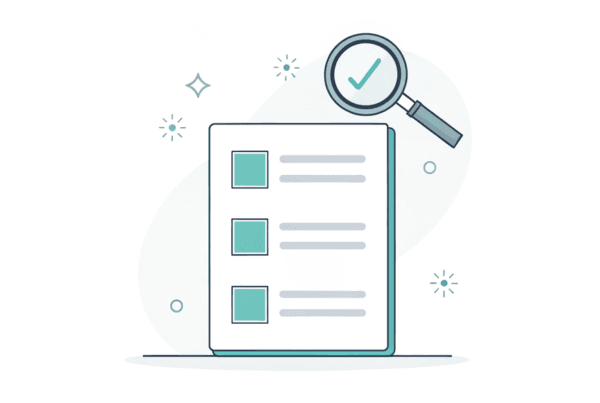The Minnesota cardiology market is seeing significant interest from buyers, from private equity to local health systems. For practice owners, this creates a window of opportunity. However, navigating this landscape to achieve your personal and financial goals requires more than just finding a buyer. Proper preparation is what separates an average outcome from a premium one. This guide outlines the current market, key steps, and valuation insights to help you make informed decisions about your future.
Market Overview
A Changing Healthcare Landscape
The days of widespread independent cardiology practices are shifting. Across the country, and right here in Minnesota, we are seeing a major trend toward consolidation. Well-capitalized buyers, including hospital systems and private equity-backed groups, are actively looking to partner with or acquire high-quality cardiology practices. They see the value in strong physician teams, established patient bases, and the potential for growth. This is not a passing trend. It reflects a fundamental change in the business of healthcare.
Drivers for Minnesota Cardiologists
For many physicians, the motivation to sell is becoming clearer. National surveys show that over 70% of physicians feel pressure from inadequate payment rates, a reality familiar to many cardiologists in Minnesota. The increasing administrative workload and the need for significant capital to invest in new technology add to these challenges. Selling your practice is no longer just an exit plan. For many, it is a strategic move to secure financial stability, reduce administrative burdens, and focus once again on patient care.
Key Considerations
Before you even think about valuation, it is important to define what a successful transition looks like for you. Is your goal to retire completely, or do you want to stay on and practice medicine without the headaches of running a business? The highest offer may not come from the right partner. A buyer’s culture, their plans for your staff, and their commitment to clinical autonomy are just as important as the purchase price. We find the most successful transitions happen when owners match with a partner who shares their vision. This alignment protects your legacy and ensures your team is in good hands long after the deal is done.
Market Activity
The interest in cardiology practices is strong, but not all buyers are the same. In Minnesota, activity is primarily driven by two groups, each with a different strategy. Knowing who they are and what they want is the first step in positioning your practice effectively.
-
Private Equity Platforms. These groups have invested nearly a trillion dollars into healthcare. Their model is to partner with a strong practice and provide capital and business expertise. They focus on growing the practice by adding ancillary services, expanding locations, and improving operational efficiency. A partnership with them often involves you retaining some equity, giving you a second opportunity for a financial return when they sell the larger platform years later.
-
Strategic Health Systems. Local and regional hospitals often acquire cardiology practices to secure their referral base and build out their cardiovascular service lines. Their goal is integration. They want to create a seamless patient experience from outpatient clinics to inpatient hospital care. For a seller, this can offer stability and a direct connection to a larger healthcare network.
The Sale Process
Selling a practice is a structured project, not a single event. It begins with organizing your financial and operational data to tell a clear and compelling story. From there, we confidentially introduce your practice to a curated group of qualified buyers to create a competitive dynamic. Once initial offers are received, you select a preferred partner. This leads to the most intensive phase: due diligence. This is where the buyer validates everything about your practice, from financials to compliance. Many deals encounter unexpected problems here. Proper preparation is the key to a smooth process that protects your time and momentum, leading to a successful closing.
How Your Practice is Valued
Your practice’s value is not based on revenue or equipment. Sophisticated buyers determine value using a formula: Adjusted EBITDA x a Market Multiple. Adjusted EBITDA is your real profitability after adding back owner-specific personal expenses and one-time costs. The multiple is a reflection of risk and growth potential. A practice that can run without its owner and has clear growth opportunities will command a higher multiple. Understanding what drives this multiple is the key to maximizing your practice’s worth.
| Valuation Factor | How It Impacts Your Value |
|---|---|
| Adjusted EBITDA | This is the true cash flow of your business. The higher it is, the higher your base value. |
| Provider Mix | A practice with associate providers is less reliant on the owner and seen as lower risk. |
| Payer Mix | Stable, diversified contracts with major payers are more valuable than a high-risk cash-pay model. |
| Growth Potential | A clear, believable story for future growth will earn you a premium valuation from buyers. |
Post-Sale Considerations
The day the deal closes is a beginning, not an end. The structure of your sale has major implications for your future. Will you receive all cash at closing, or will a portion be in an “earnout” tied to future performance? Many deals now include “rollover equity,” where you retain a stake in the new, larger company. This gives you the chance for a second, often larger, payout down the road. It is important to plan for these possibilities and decide what role, if any, you want to have in the practice moving forward. Defining your personal and financial goals for life after the sale is a critical step in a successful transition.
Frequently Asked Questions
What market trends are currently affecting the sale of cardiology practices in Minnesota?
The Minnesota cardiology market is experiencing significant interest from buyers such as private equity groups and local health systems due to a national trend of consolidation in healthcare. Buyers value strong physician teams, established patient bases, and growth potential. This trend reflects a fundamental change in the healthcare business landscape, emphasizing partnership and acquisition over independent practice ownership.
What are the main motivations for Minnesota cardiologists to sell their practices?
Cardiologists in Minnesota are often motivated to sell due to pressures from inadequate payment rates, increasing administrative workload, and the need for capital investment in new technology. Selling is viewed not only as an exit strategy but also as a way to gain financial stability, reduce administrative responsibilities, and refocus on patient care.
How should a cardiology practice owner prepare for a successful sale?
Preparation involves clearly defining personal and financial goals, understanding what success means (e.g., retirement vs. staying involved), and finding a buyer whose culture and vision align with yours. Organizing financial and operational data to present a clear story, and working with qualified buyers in a competitive process, are key steps that lead to a smooth sale and premium outcome.
How is the value of a Minnesota cardiology practice determined?
Practice valuation is based on Adjusted EBITDA (real profitability after adjustments) multiplied by a market multiple which reflects risk and growth potential. Factors impacting value include adjusted EBITDA, provider mix (less owner reliance = higher value), payer mix (stability and diversity increase value), and the practice’s future growth outlook. A practice capable of running independently from the owner and demonstrating growth potential commands a higher valuation.
What should sellers consider about the sale structure after closing?
Sellers should consider whether the payment is all cash at closing or includes an “earnout” tied to future performance. Many deals also include “rollover equity,” allowing the seller to retain a stake in the new company and benefit from future growth. It’s important to plan the post-sale role and align the deal structure with long-term personal and financial goals for a successful transition.



